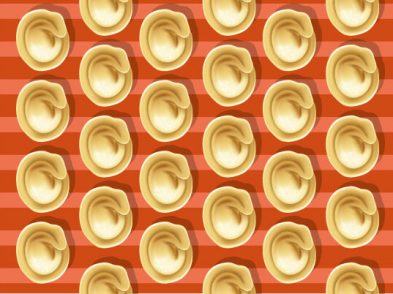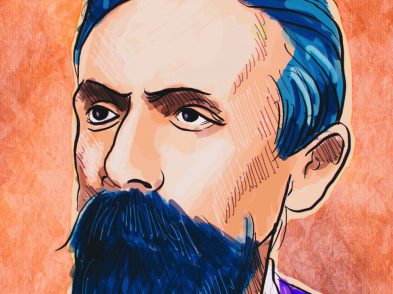At the end of World War II, Italians were asked to decide whether they wanted to retain their monarchy or to become a republic. Women, for the first time, also voted in the plebiscite. In the referendum held on June 2 and 3, 1946, the republican side won by a marginal majority: 54 percent to 46 percent.
Fearing a civil war, King Umberto II chose not to contest the results of the vote, mistakenly believing he would eventually be called back to reign. Although he never abdicated, Umberto and his wife, Maria José of Savoy, together with their four children left Italy and went into exile. The royal couple had reigned only 27 days, from May 9 to June 2, the day of the vote, after Umberto’s father, Vittorio Emanuele III abdicated amidst accusations that he had aided and abetted Mussolini’s rise to power and was responsible for much of the results.
The newly exiled queen was born Princess Maria José Charlotte Henrietta Gabriella of Saxe-Coburg on August 4, 1906, in Ostend, Belgium. She was the only daughter of King Albert I of Belgium and Duchess Elisabetta of Bavaria. From an early age she was intended by her parents to marry Umberto, the Prince of Piedmont, heir to the Italian throne, whom she met briefly in 1916. With this future in mind, her parents sent her to Santissima Annunziata College at Poggio Imperiale in Florence, so she would learn to speak Italian fluently. In order to complete her ‘Italianisation,’ for the 10 years between leaving Poggio Imperiale and marrying the prince, she was tutored at court by Anna Licari Barberini, a highly cultured Florentine governess.
When Umberto and Maria José married, on January 8, 1930, she was a tall, slim, blonde, blue-eyed beauty, and he was an equally tall, dashing, infantry officer prince. The wedding took place at the Paolina Chapel of the Quirinale in Rome. After returning from their honeymoon in Courmayeur, they went to live in Turin, where Umberto’s regiment was stationed.
Transferred to Naples in 1933, Maria José and Umberto remained there until World War II broke out. It was also where their first three children were born: Maria Pia (1934); Vittorio Emanuele (1937), the present heir to the throne; and Maria Gabriella (1940). Their fourth child, Maria Beatrice, was born in Rome in 1943.
Raised in the more liberal Belgian court and with undimmed memories of the impact World War I had on her homeland, Maria José found the spread of fascism and the growing friendship between Italy and Germany, together with the promulgation of the racists laws, an anathema, and she was not afraid to show it. In fact, during Hitler’s visit to Rome in 1938, she made little effort to hide her feelings towards him. Distrustful and cold towards her, Mussolini had his chief of police secretly keep her under surveillance.
In 1939, Maria José became the president of the Red Cross in Italy, a job she took very seriously. During the war, she appealed to Hitler, in vain, to allow food supplies into Belgium and to release Belgian prisoners of war. Thanks to her courage in maintaining secret contacts with the Allies and important figures within the Vatican, she was the first of the Italian royals to use these connections in an attempt to bring about an end to the war with Italy. Indeed, she was once described as ‘the only man of the Royal House of Savoy.’ However, regardless of her personal popularity, the referendum sealed her fate as queen.
On reaching exile in Cascais, Portugal, the newly deposed royal couple separated almost immediately, but they never divorced. Maria José and her son moved to Merlinge, Switzerland. The three daughters stayed with their father for several years before rejoining their mother. Many years later, after briefly living in Cuernavaca, Mexico, with her youngest daughter, Maria José returned permanently to Switzerland, where she wrote authoritative books on her husband’s family and actively promoted the arts by instituting an international musical composition prize. An accomplished pianist, she inherited her love of music from her mother.
Italy’s last queen died, aged 94, in Geneva on January 27, 2001. She was buried alongside her husband in Hautecombe Abbey in Haute-Savoie, France. As the 1948 Italian Constitution had banned Umberto and his male descendants from returning to Italy, Marie José did not visit Italy again until 1988, five years after her husband’s death. The Italian Parliament finally removed the ban in 2002.








